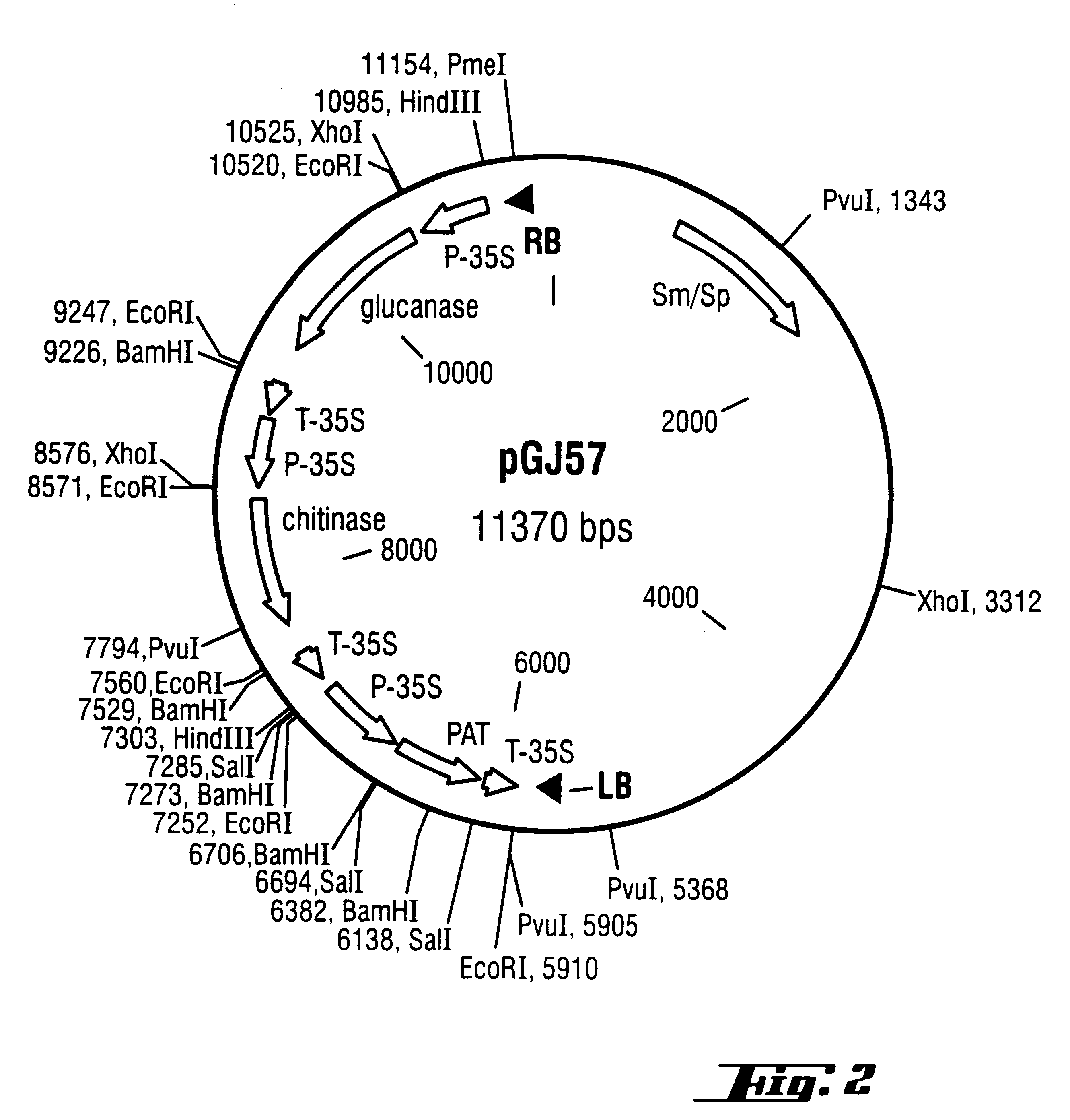Transformed embryogenic microspores for the generation of fertile homozygous plants
a technology of embryogenic microspores and plants, applied in the field of embryogenic microspores, can solve the problems of difficult if not impossible to obtain transgenic plants, described methods that have not been reproduced by others, and the failure of microspores to achieve the effect of success
- Summary
- Abstract
- Description
- Claims
- Application Information
AI Technical Summary
Benefits of technology
Problems solved by technology
Method used
Image
Examples
Embodiment Construction
The present invention is directed to transformed embryogenic microspores. The invention additionally provides an improved process for the Agrobacterium mediated transformation.
The invention is directed to transformed, embryogenic microspores and progeny thereof characterized by
a) being transformed by Agrobacterium tumefaciens,
b) capable of leading to non-chimeric transformed haploid or doubled haploid embryos that develop into fertile homozygous plants within one generation and
c) containing stably integrated into their genome a foreign DNA, said DNA being characterized in that it comprises at least one gene of interest and at least base pairs within the right border sequence of Agrobacterium T-DNA.
The invention is furthermore directed to microspores containing integrated foreign DNA wherein the gene of interest is bordered by at least base pairs within the right border and parts or all of the left border sequence leading to the specified insertion of the gene(s) of interest. Especia...
PUM
| Property | Measurement | Unit |
|---|---|---|
| pH | aaaaa | aaaaa |
| thick | aaaaa | aaaaa |
| concentrations | aaaaa | aaaaa |
Abstract
Description
Claims
Application Information
 Login to View More
Login to View More - R&D
- Intellectual Property
- Life Sciences
- Materials
- Tech Scout
- Unparalleled Data Quality
- Higher Quality Content
- 60% Fewer Hallucinations
Browse by: Latest US Patents, China's latest patents, Technical Efficacy Thesaurus, Application Domain, Technology Topic, Popular Technical Reports.
© 2025 PatSnap. All rights reserved.Legal|Privacy policy|Modern Slavery Act Transparency Statement|Sitemap|About US| Contact US: help@patsnap.com


